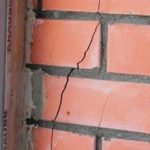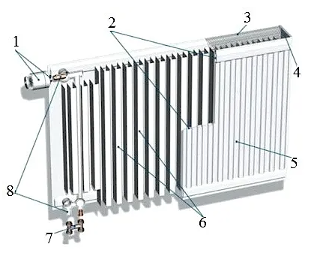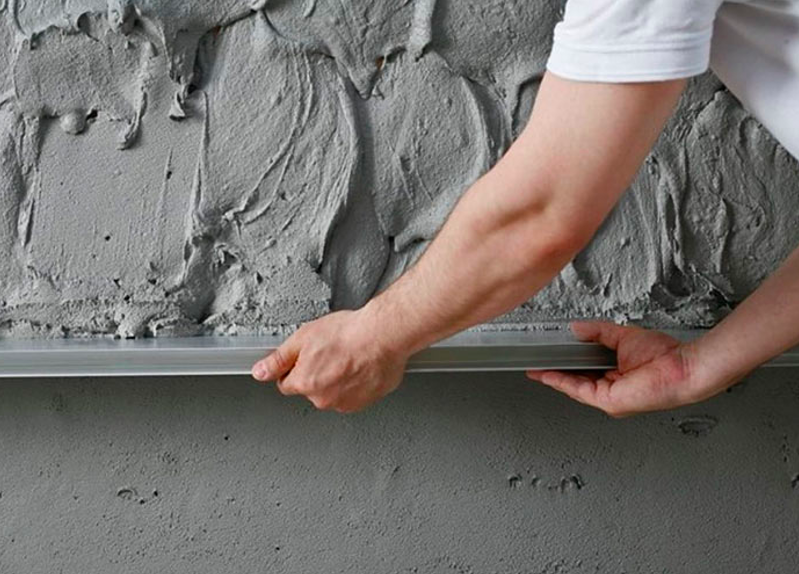Insulating garage doors with your own hands: how to do it, how to insulate it
Insulation of garage doors is necessary in most regions of Russia. It is quite simple to carry out, since the area is small and almost all materials are affordable. This article describes how to choose insulation, as well as how to properly perform installation work.
The content of the article
Choice of insulation
Before you start insulating your garage door, you should choose the right material. There are several types of insulation, and each of them has its own characteristics, strengths and weaknesses. These types are most often used.
Mineral wool
You can insulate garage doors with mineral wool. This is an inexpensive, fairly strong and durable material that can be easily cut into the required fragments. There are several types of mineral wool:
- Glass wool – protects well from cold and can withstand almost the entire temperature range. However, installation is difficult - the fibers can damage the skin and respiratory tract, so the material has been rarely used lately.
- Slag - inexpensive insulation with good insulating properties. Absorbs moisture, so it needs good waterproofing.
- Stone cotton wool safer, although it also quickly gets wet when in contact with moisture and therefore deteriorates. Therefore, it is very important to ensure reliable waterproofing.
Styrofoam
Very often, garage doors are insulated with penoplex or polystyrene foam. These are materials with similar properties, they have good thermal insulation, do not absorb moisture, but are not very durable. Therefore, you need to work with them carefully. The main types of foam are:
- Based on polystyrene – EPPS. It is more durable and is also resistant to fire.
- Made from polyvinyl chloride - durable foam plastic, in many ways similar to EPS, but the price can vary both up and down.
- Urea-formaldehyde - holds heat well, is inexpensive, but if burned it will release toxic substances.
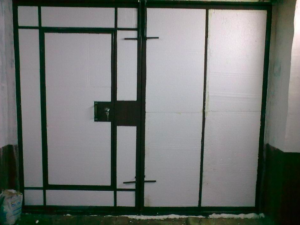
Polyurethane foam
You can also insulate your garage door with polyurethane foam. This is a rigid material with good heat and sound insulation. It can be used without preliminary preparation of the walls. It can withstand any temperature, so it can be used in any region of Russia.
Resistant to rot, rodents and mold, fireproof. Can be used for 20-30 years. But there is also a disadvantage associated with the high price. In addition, it is worth considering that the material is not resistant to UV radiation - protection from sunlight is required.
Foil polyethylene
Another way to insulate garage doors is with foil-coated polyethylene. The material has high thermal conductivity due to the foil insert. It is easy to cut into the required fragments, and the fabric is strong and resistant to moisture. This material is more expensive, but it is durable and effective in terms of protection from the cold.
Preparatory work
Insulated garage doors ensure normal indoor temperature and humidity. And not only in winter, but also in summer - the insulation prevents it from getting too hot.To achieve this result, first of all it is necessary to carry out preparatory work. The main stages are:
- Cleaning the old surface. Stubborn dirt, rust, dust, and oil stains should be removed. The procedure is carried out until the base is clean, after which the surface is allowed to dry.
- Next, metal parts are primed, including handles, fasteners, canopy and other fittings.
- To insulate your garage door yourself correctly, it is important to apply a coat of paint after the primer has dried. Paint all surfaces, as well as corners, especially carefully in the area of joints. Moreover, it is advisable to apply at least two layers, allowing the previous one to dry.
Step-by-step instructions for insulation
The insulation of the gate is carried out in several stages, and you need to start with the manufacture of the sheathing, then lay the material, and then perform the finishing. The step-by-step instructions are as follows:
- They draw up a drawing of the sheathing, select a wooden beam (the cross-section can be 40*40 mm or a little larger - 50*50 mm) and saw it into the appropriate fragments.
- The wood is pre-treated with an antiseptic.
- Drill holes for the appropriate screw sizes. Then small recesses are drilled according to the parameters of the caps.
- The bars are fastened with self-tapping screws strictly along the perimeter.
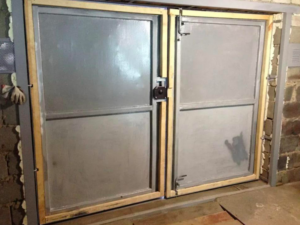
- The caps are puttied and then painted to prevent corrosion.
- Next, the garage doors are insulated with polystyrene foam or other insulation, securing the material to the made frame. It is better to do this without using self-tapping screws, because they create additional holes through which heat will escape. It is best to fix the fragments using thin blocks.
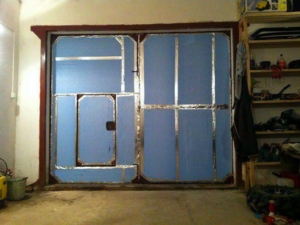
- Now the garage door is insulated - all that remains is to complete the final cladding. It plays an aesthetic and practical role, as it serves as an additional barrier to the cold.
Thus, it is best to insulate garage doors with penoplex or similar material. It is light, practically does not absorb moisture, and is easily cut into fragments. But in this case, finishing must be done to prevent contact of the surface with the rays of the sun.


